11 ways the pros modify their bikes for Paris-Roubaix
There's more to it than 28mm tyres
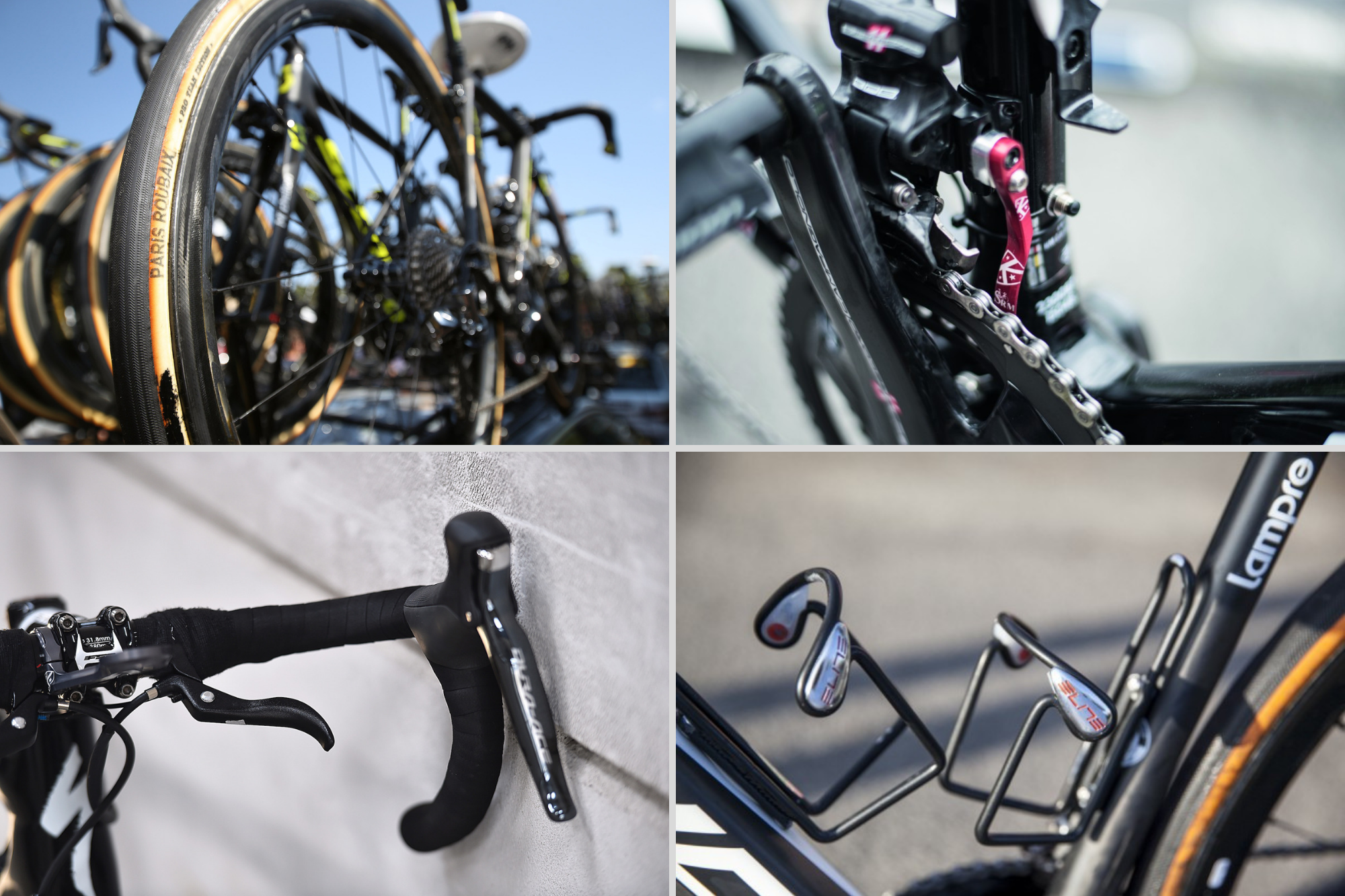
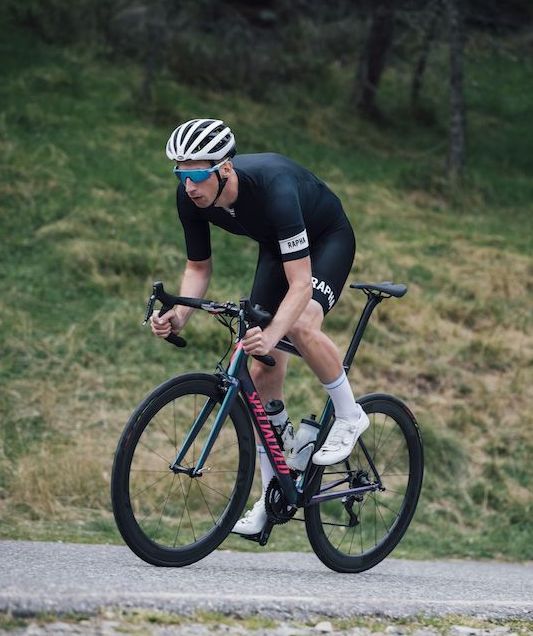
With Paris-Roubaix coming up this weekend the harshest cobbles of the season are just a few days away, which means that pro mechanics are working feverishly to prepare their riders' bikes for the demands of the pavé.
You might think that all that needs doing is to fit some 28mm tyres, then off you go, but there's much more to it for riders in search of Roubaix glory.
1. Special bikes
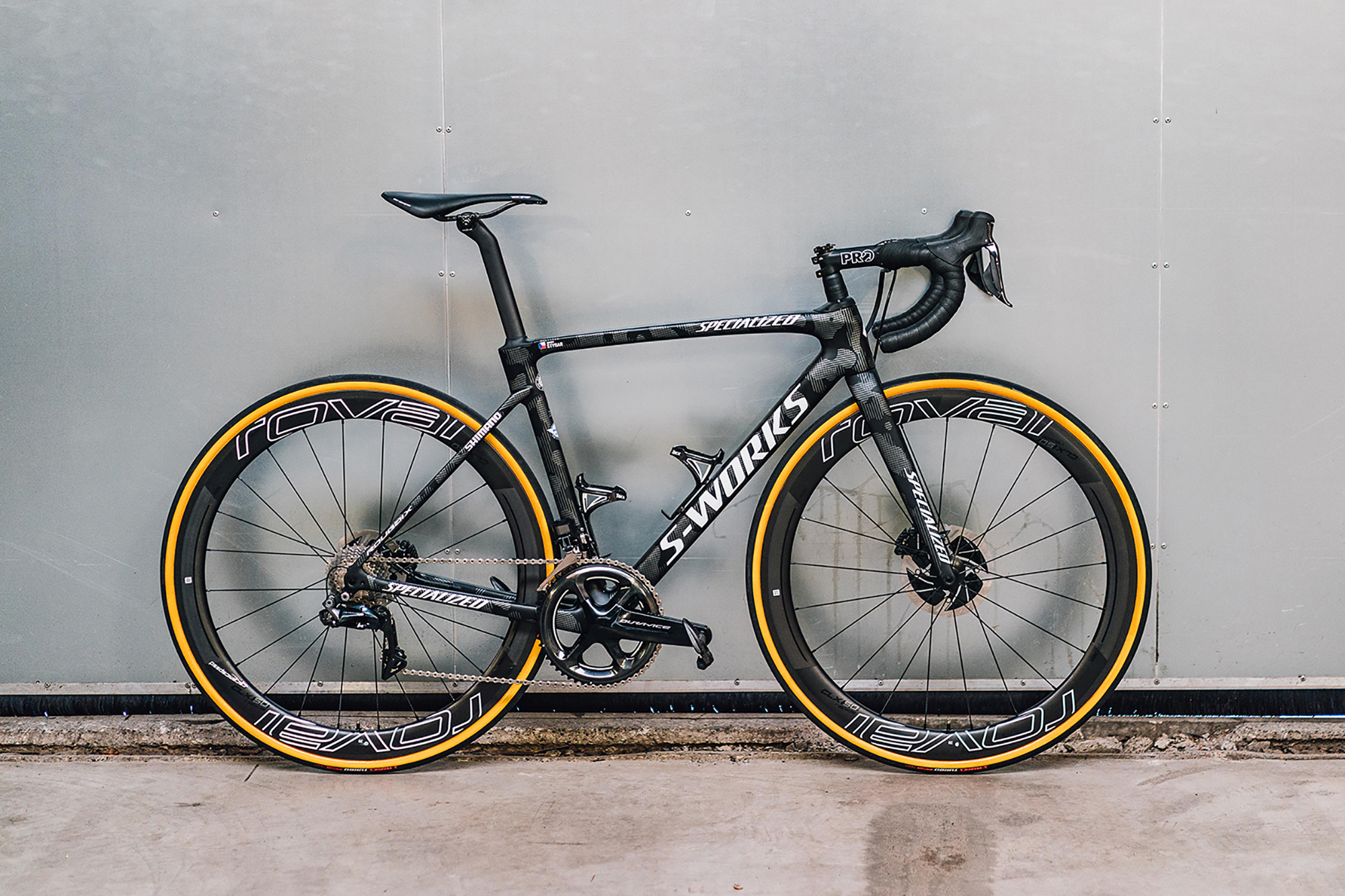
The cobbles of Paris-Roubaix are so ferocious that for years the pros have used specially designed bikes better equipped to handle the battering.
Some examples include the Specialized Roubaix, recently updated with pioneering front end 'Futureshock' suspension. Team Sky will be riding the new Pinarello Dogma FS which has full electronic suspension and the Trek Domane has a special customisable 'IsoSpeed' adjuster that allows the frame to flex.
The idea behind these bikes is to keep the riders feeling as fresh for as long as possible, giving them an extra advantage in the sprint for victory.
2. Double wrap bar tape
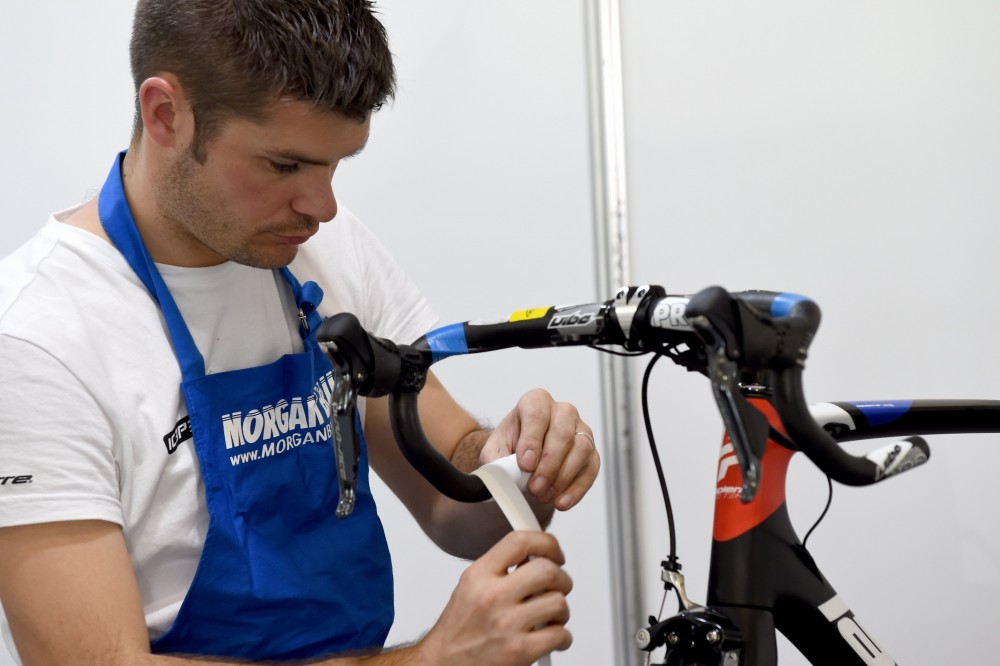
This handlebar tape might not be as white after a week in sweltering conditions
While 250km of racing over roads that you'd think twice about driving down will take a significant toll on the legs, the relentless juddering will also numb the hands and arms. To combat this, many pros will double (or even triple) wrap their bar tape in an attempt to provide extra cushioning for their hands, wrists, and shoulders.
>>> How to wrap handlebar tape (video)
This is also often complemented by gel inserts positioned underneath the bar tape, which provide a little extra protection from the cobbled terrain, especially as frame manufacturers generally concentrate on providing a comfortable rear end for their bikes, occasionally neglecting to provide any extra cushioning at the front.
3. Bar tape on pedals
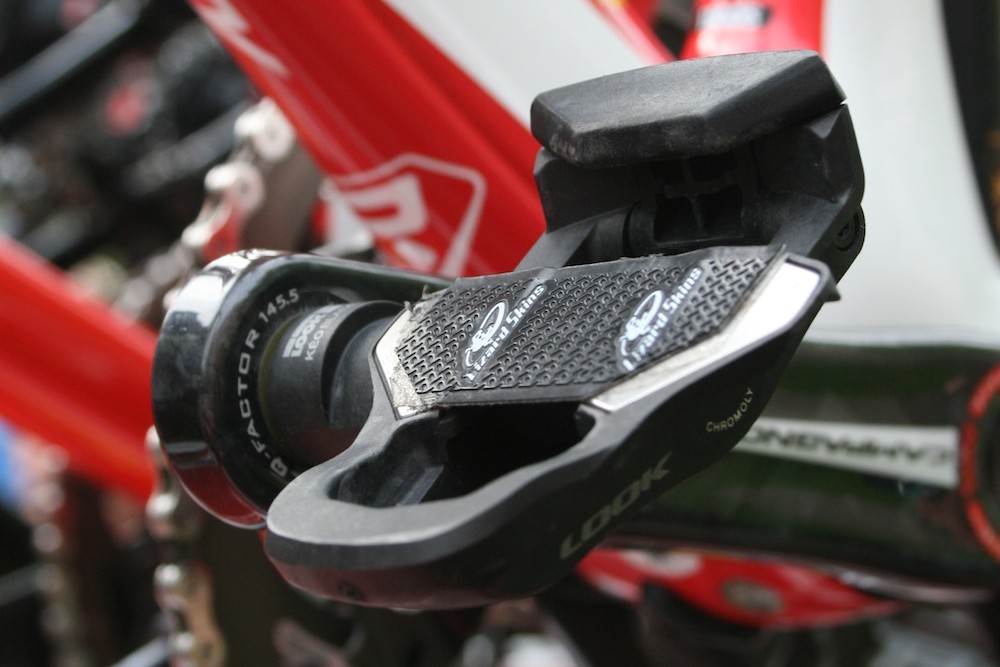
Lizard Skins bar tape on Tim Wellens' Look pedals
One less obvious place to put some extra bar tape is on your pedals, but we've seen pro teams such as Lotto-Soudal do this in the past. This not only has the same effect as putting extra bar tape around the handlebars (i.e. vibration dampening), but should also help to stop the cleats from slipping around in the pedals and even popping out when riding over really rough road surfaces.
>>> The best cycling clipless pedals
Of course the other pedal modification we've seen is riders using pedals that have been specifically designed for racing in muddy and wet conditions, such as the Speedplay Pavé pedals that Fabian Cancellara used for a number of years.
4. Wider tyres
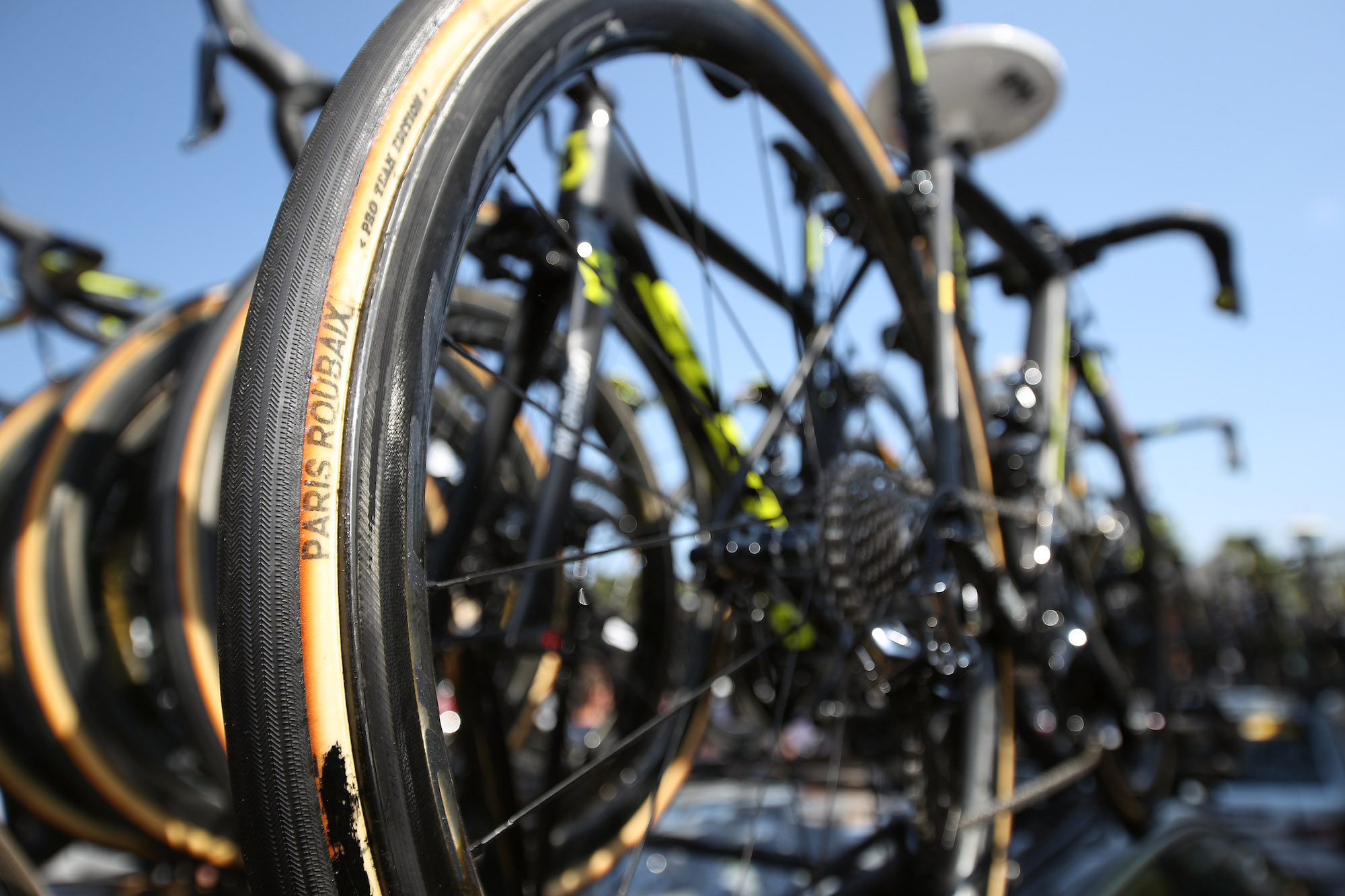
The classic bike modification for the cobbles is to fit wider tyres. Back in the day, riders would flirt with 25mm tyres run at a lower pressure for extra comfort and traction, especially in wet conditions. However, with wider tyres now being the norm for most road racing, it's common to see riders using 28mm or even 30mm tyres for the Classics. Most modern endurance bikes are capable of accommodating the increased size.
>>> How to puncture proof your tyres (video)
Tubular tyres will be used by most of the pros but there could potentially be some riders who opt to set their wheels up tubeless. Not least because it allows you to run your tyres at a lower pressure.
>>> Should you change to tubeless tyres (video)
For Paris-Roubaix in particular, many pros shun their tyre sponsors in favour have hand-sewn tubular tyres made specifically for the event, with FMB and Dugast in particular having some star name clientele.
5. Lower pressures
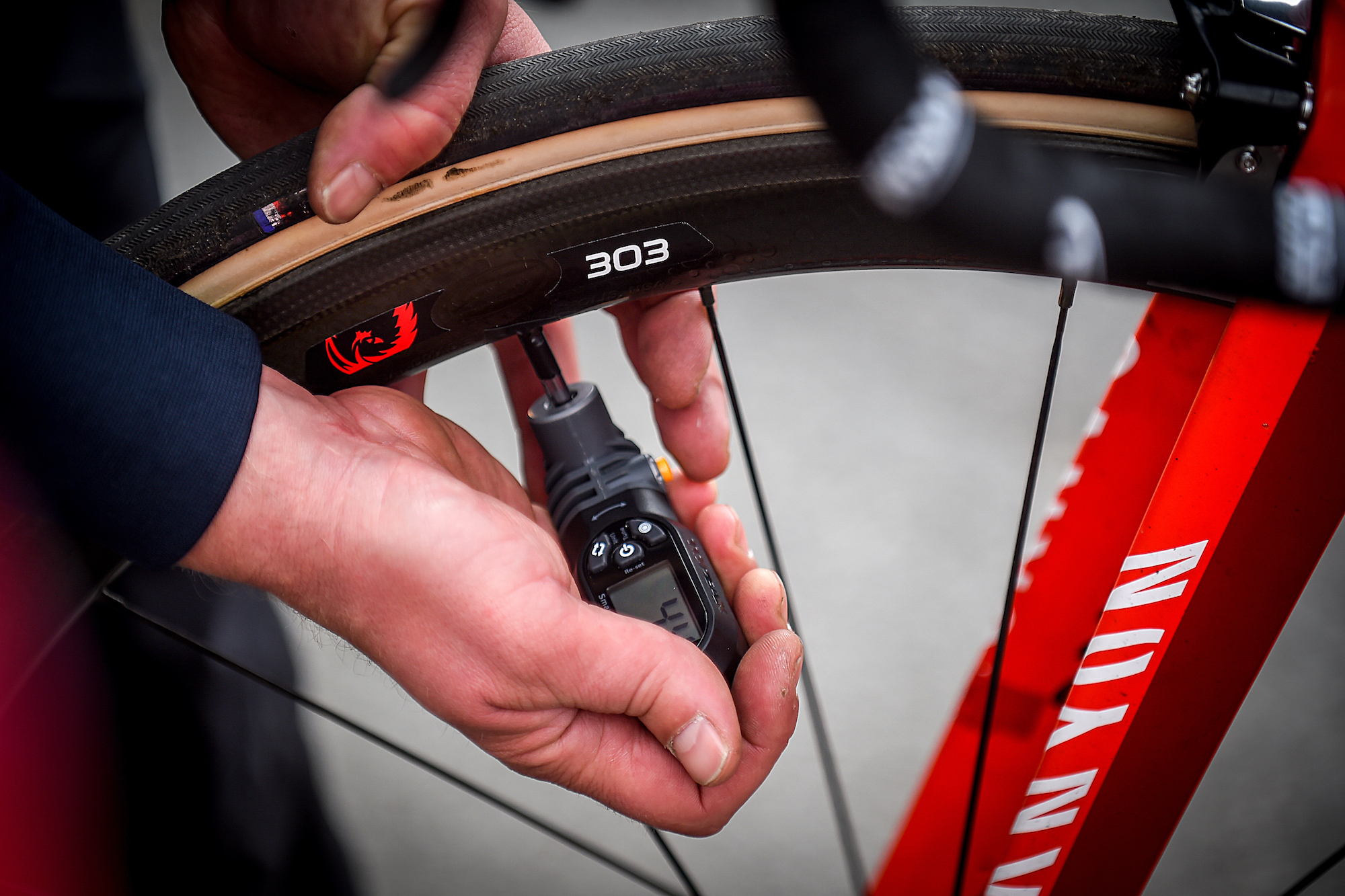
Of course there's no point using 28mm tyres for extra comfort and grip then pumping them up to 120 psi, so all of the pros will be running their tyres at lower pressures, particularly if the rain begins to fall.
Most professional riders are fastidious about their bike setup, but no more so than for the cobbles, where they will know exactly what psi they want their tyres pumped up to. In general most go for 65-85 psi, although this could be lower if there's a forecast for rain.
6. Big small chainring
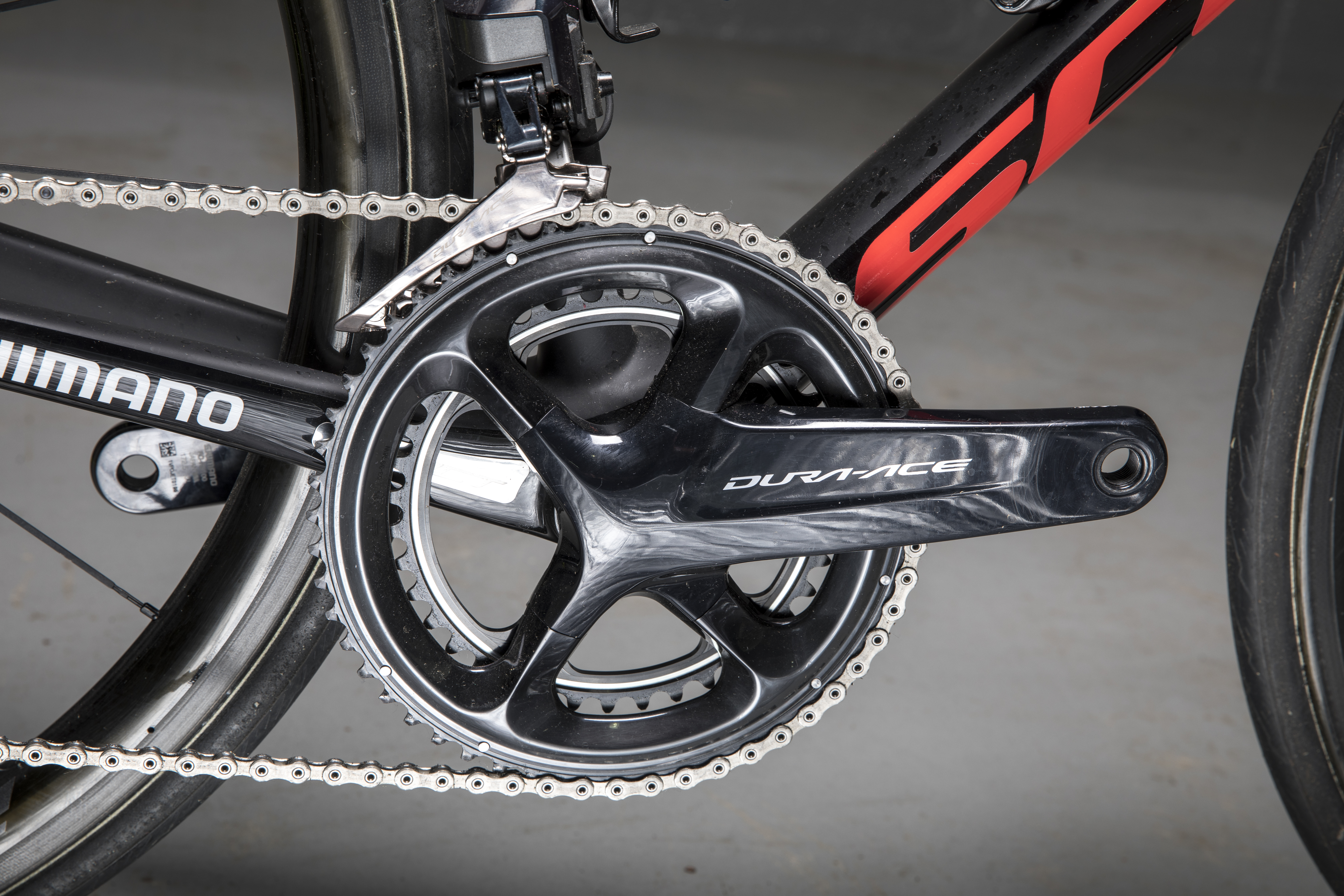
It might now have a an uphill cobbled sector, but Paris-Roubaix isn't going to rival the Tour of Flanders for climbing any time soon, so many pros opt for a bigger small chainring, usually meaning either a 53/42t or 53/44t setup, with the small chainring only being called into action if it's a muddy day and the going is tough over the cobbles, or during lulls in the pace between sectors.
>>> Is it the end for the 34t chainring?
A few riders will also decide to fit a bigger outer chainring, usually a 54t or 55t, which will really come in handy for fast races, particularly if there is a south-westerly wind blowing in Paris-Roubaix.
7. Different wheels
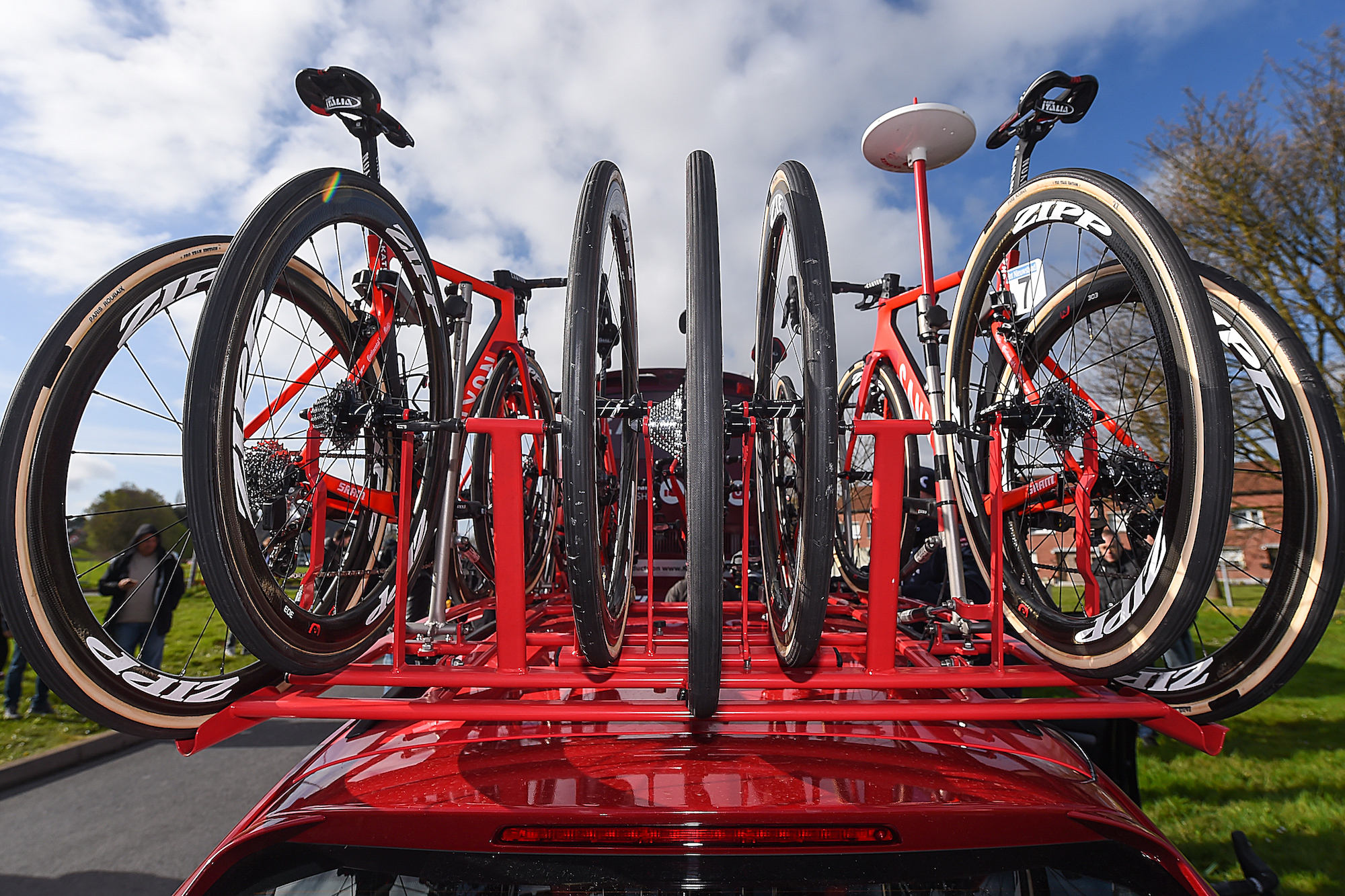
Back in 2007, Stuart O'Grady punctured in the Arenberg Forest, got a spare wheel from neutral service, regained contact with the front group, then rode away for a glorious solo victory. Impressive enough anyway, even before you consider that the wheel he was given from neutral service made its way out of the factory in 1986.
>>> Do you need deep section carbon wheels?
While most of the riders will opt for carbon wheels, we will still see quite a few opting for higher spoke count aluminium wheels in an attempt to avoid mechanicals, while team cars will also often carry aluminium rather than carbon wheels so as not to ruin too many pricey deep section wheels.
8. Remote shifters
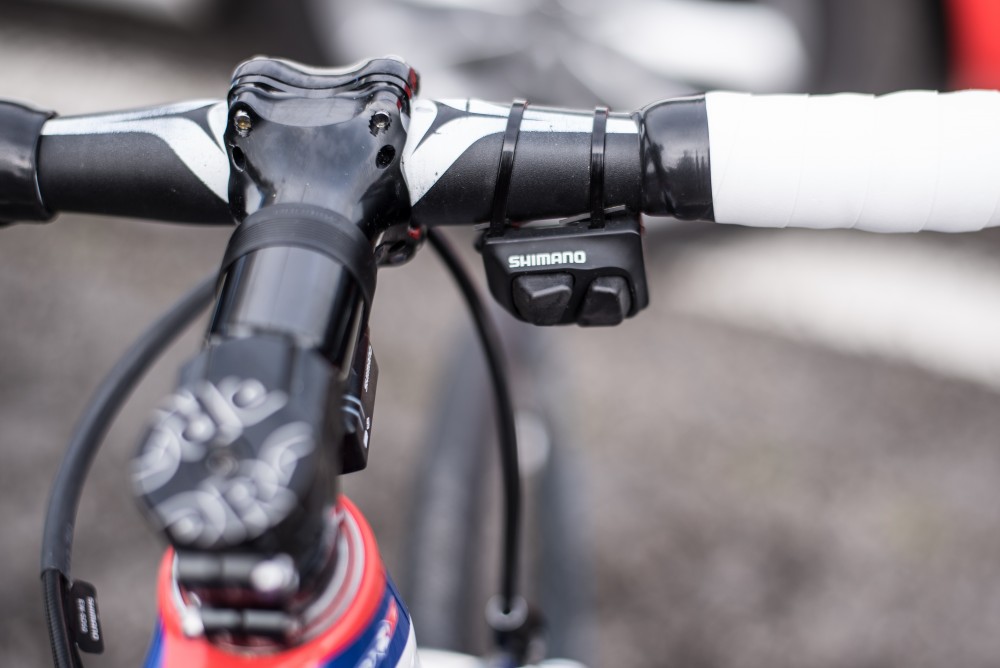
One major benefit of electronic groupsets is the ability for riders to position shifting buttons in multiple places on their handlebars, giving the ability to change gear without needing to move their hands to the brake levers.
>>> Are electronic groupsets necessary
We've seen multiple setups over the years, but the standard option is to have sprint shifter on the inside of the drops, and climbing shifters on the tops to allow riders to respond to attacks when riding over the cobbles with their hands on the tops of the bars.
9. Top mount brake levers
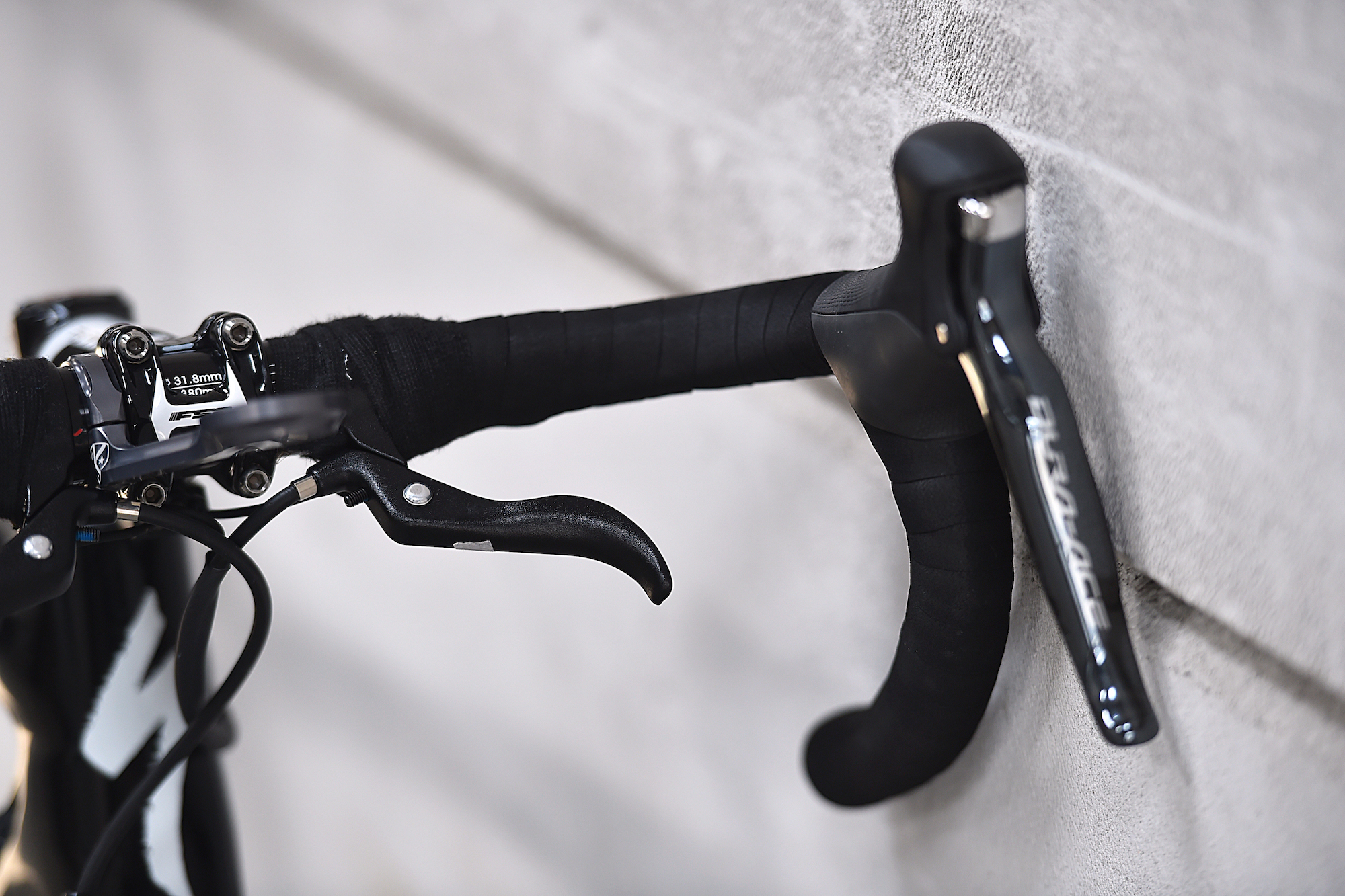
You see it less and less nowadays, but another modification that used to be favoured by riders who tackled the cobbles with their hands on the tops was the top mount brake lever, something which was seen on John Degenkolb's Giant Defy when he won Paris-Roubaix in 2015.
>>> How to use your brakes properly (video)
Having a brake lever in this position allows riders to adjust their speed over the cobbles without changing their hand position, a vital ability to have when you've got riders crashing in front of you and spectators stepping into your path to get pictures.
However, you're much more likely to see riders using the normal braking levers nowadays, especially since bike companies have developed the front end comfort of the bikes.
10. Chain catchers
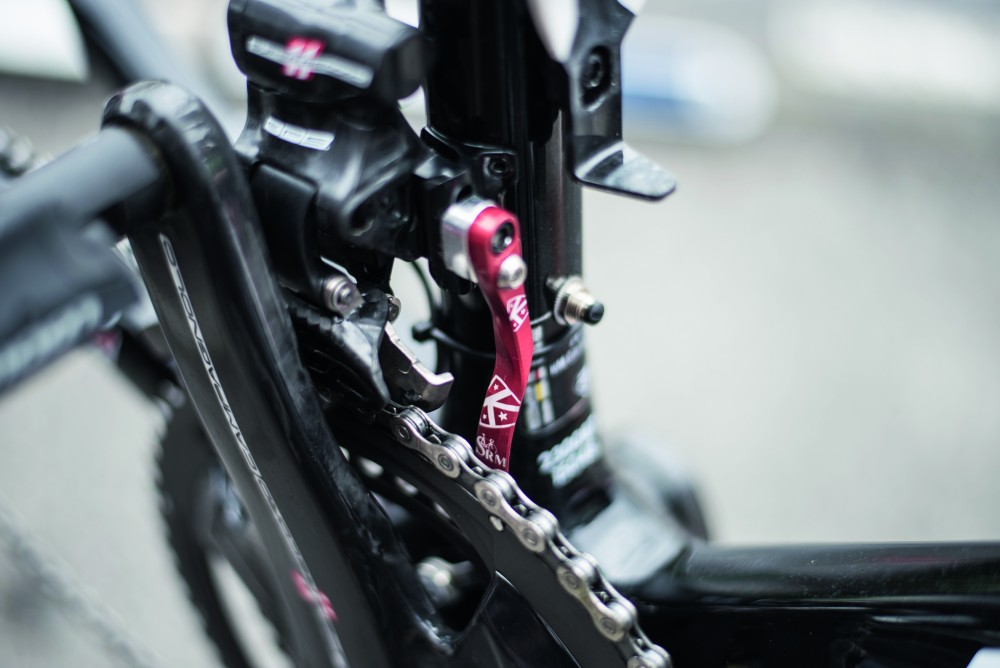
A dropped chain at a vital moment could be the difference between victory and an anonymous finish five minutes down in 37th place. And given the rough ride that your drivetrain gets over the cobbles, it's a testament to modern groupsets that we don't see chains coming off left, right, and centre as soon as any race hits the cobbles.
>>> How to change your chain (video)
One reason for this is that many teams choose to fit a chain catcher, which stops the chain being juddered off the chainrings and getting stuck around the bottom bracket.
11. Grip tape on bottle cages
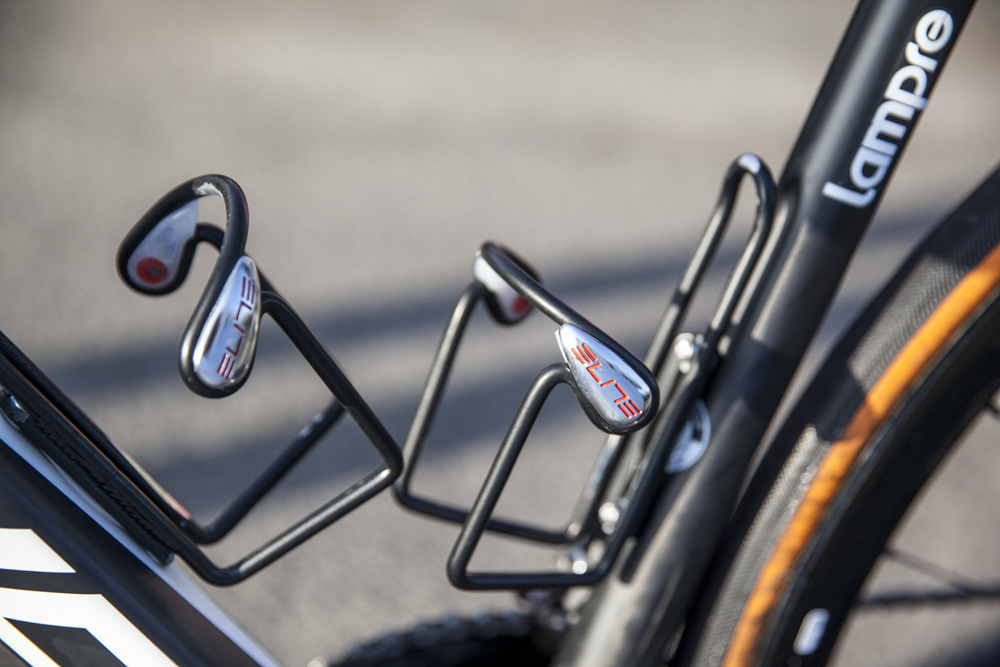
The rough ride of the cobbles also takes its toll on bottle cages, and the vibrations will often work loose bottles sending them rolling across the road. To avoid this many teams fit steel bottle cages instead of their normal carbon-fibre ones which can be shaped to give a secure hold of the bottle.
This is often complemented by grip tape, which might do no good whatsoever to the bottle, but should keep it securely held in place to ensure that a rider will be well hydrated come the end of the race.

Thank you for reading 20 articles this month* Join now for unlimited access
Enjoy your first month for just £1 / $1 / €1
*Read 5 free articles per month without a subscription

Join now for unlimited access
Try first month for just £1 / $1 / €1
Get The Leadout Newsletter
The latest race content, interviews, features, reviews and expert buying guides, direct to your inbox!
Follow on Twitter: @richwindy
Richard is digital editor of Cycling Weekly. Joining the team in 2013, Richard became editor of the website in 2014 and coordinates site content and strategy, leading the news team in coverage of the world's biggest races and working with the tech editor to deliver comprehensive buying guides, reviews, and the latest product news.
An occasional racer, Richard spends most of his time preparing for long-distance touring rides these days, or getting out to the Surrey Hills on the weekend on his Specialized Tarmac SL6 (with an obligatory pub stop of course).
-
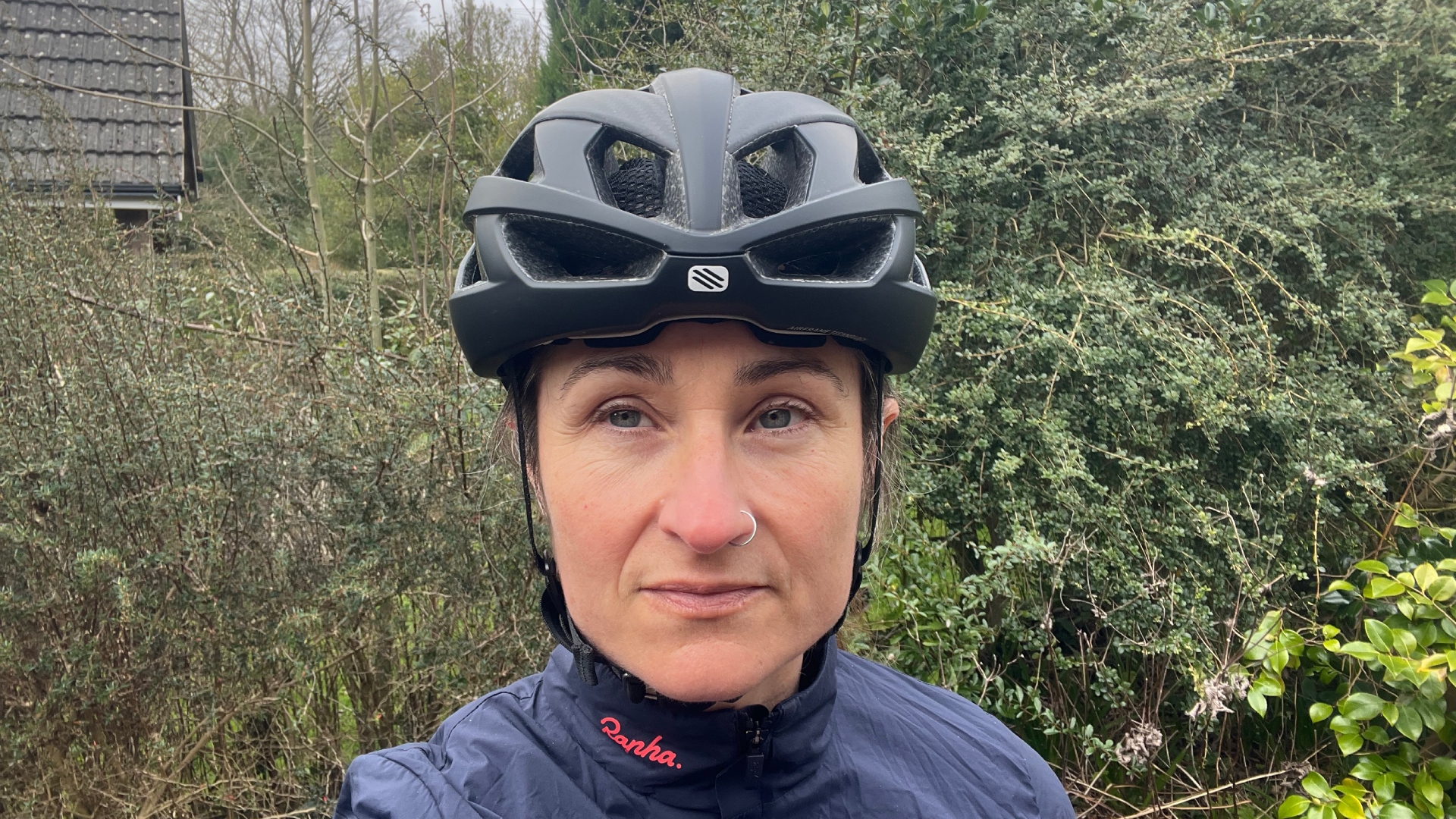 Rudy Project Rebel bike helmet review
Rudy Project Rebel bike helmet reviewRebelling against the solid shell oversized helmet fashion, the Rudy Project Rebel goes big on ventilation and breathability, but there is a weight penalty
By Hannah Bussey Published
-
 'I wanted to be world and Olympic champion – my parents made me feel that it was possible': Meet Sophie Capewell and her gold medal-winning mum
'I wanted to be world and Olympic champion – my parents made me feel that it was possible': Meet Sophie Capewell and her gold medal-winning mumSome mothers and daughters make memories together. The world-beating Capewells make history too. Tom Davidson meets the extraordinary duo
By Tom Davidson Published
-
 Pro bike: Chris Lawless' Team Ineos Pinarello F12
Pro bike: Chris Lawless' Team Ineos Pinarello F12Rim brakes and clinchers or tubulars for the British Tour de Yorkshire champion
By Michelle Arthurs-Brennan Published
-
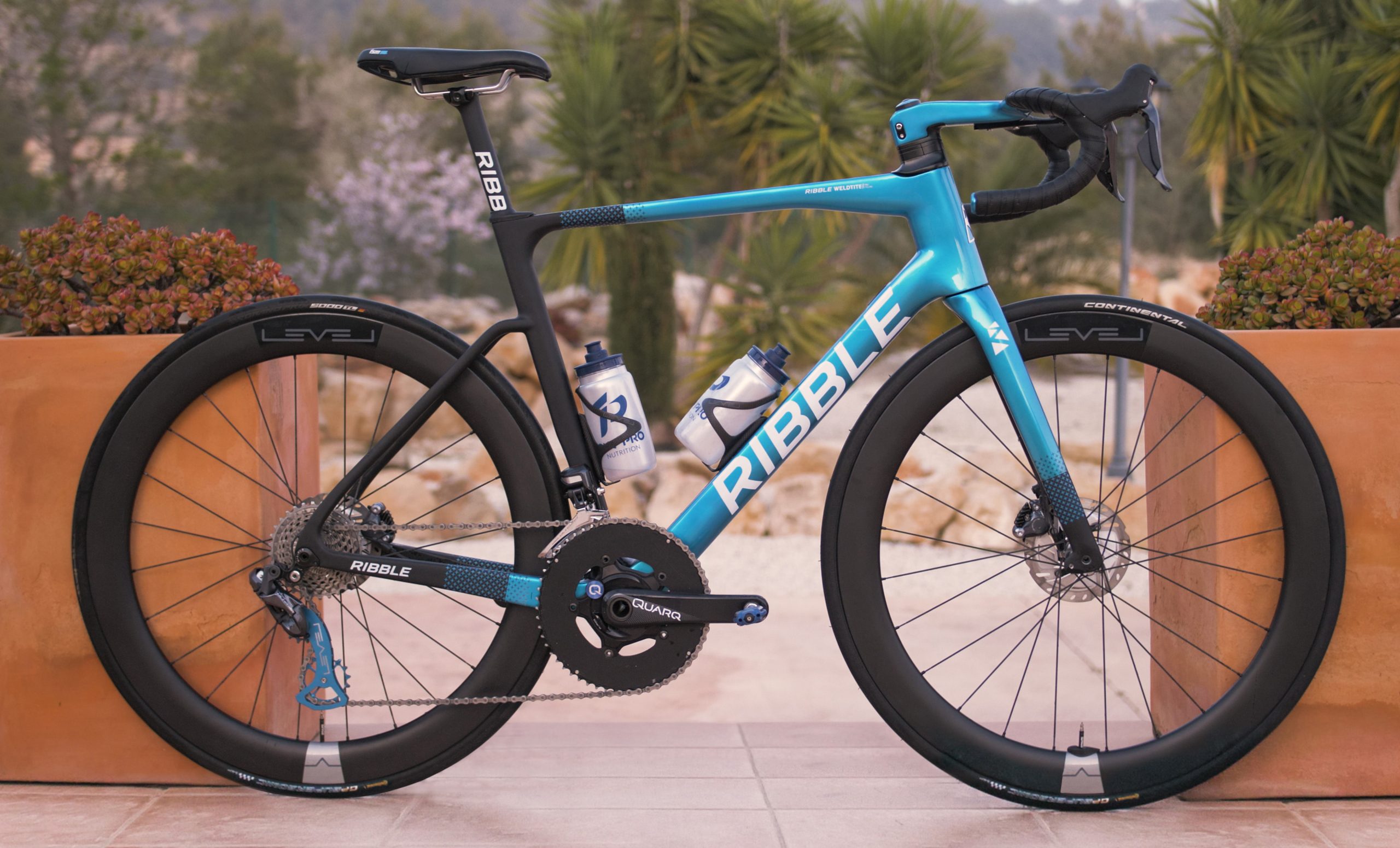 Pro bike: Dan Bigham's Ribble SL R
Pro bike: Dan Bigham's Ribble SL RWe take a look at the Huub Wattbike rider's 2020 rig
By Michelle Arthurs-Brennan Published
-
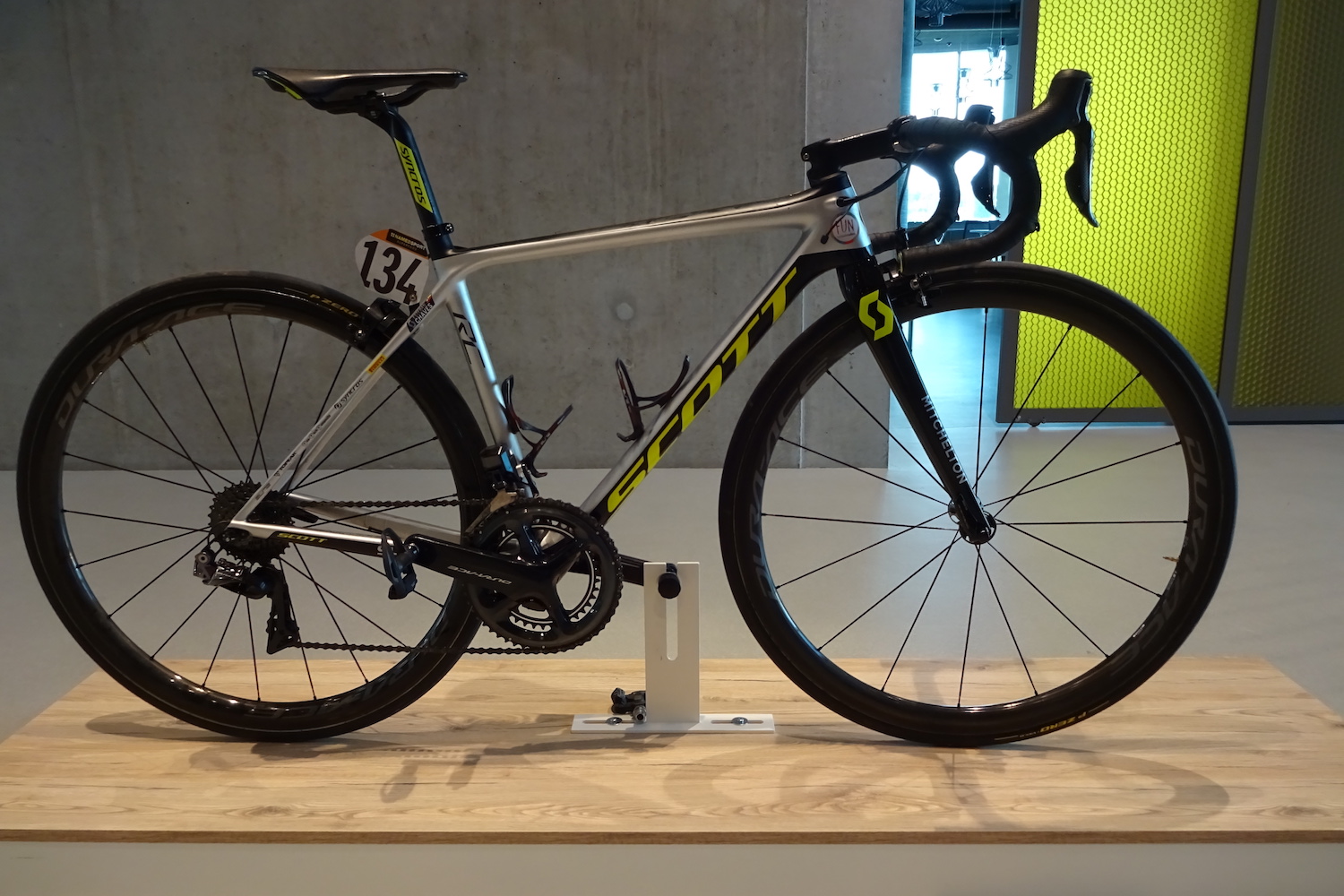 Pro bike: Esteban Chaves’s Giro stage 19-winning Scott Addict RC
Pro bike: Esteban Chaves’s Giro stage 19-winning Scott Addict RCA look at the Colombian climber’s bike from the Giro d’Italia
By Paul Norman Published
-
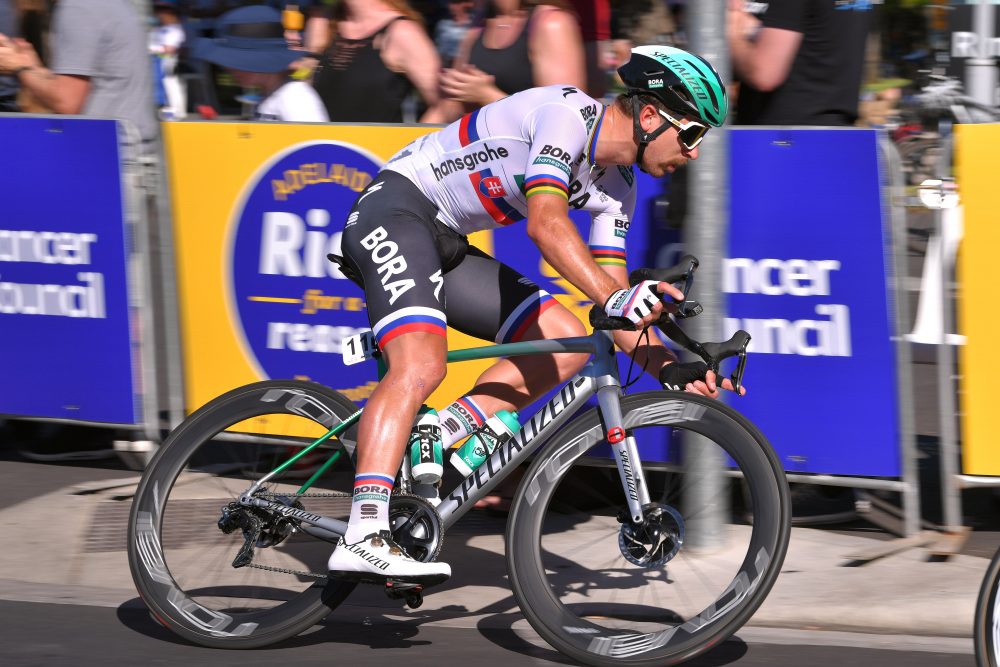 Peter Sagan riding Specialized Allez Sprint bike in the Tour Down Under Classic
Peter Sagan riding Specialized Allez Sprint bike in the Tour Down Under ClassicAn alloy machine with disc brakes and clincher tyres – whatever next?
By Paul Norman Published
-
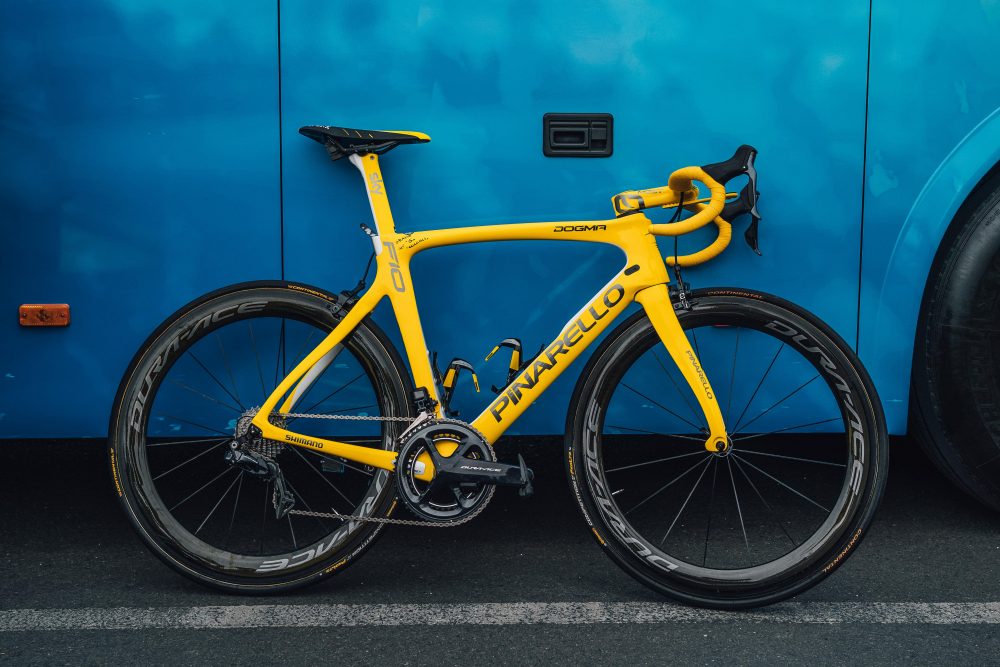 Geraint Thomas's Tour de France-winning Pinarello Dogma F10 X-Light
Geraint Thomas's Tour de France-winning Pinarello Dogma F10 X-LightUp close and personal with homegrown hero Geraint Thomas's yellow Pinarello
By Simon Smythe Published
-
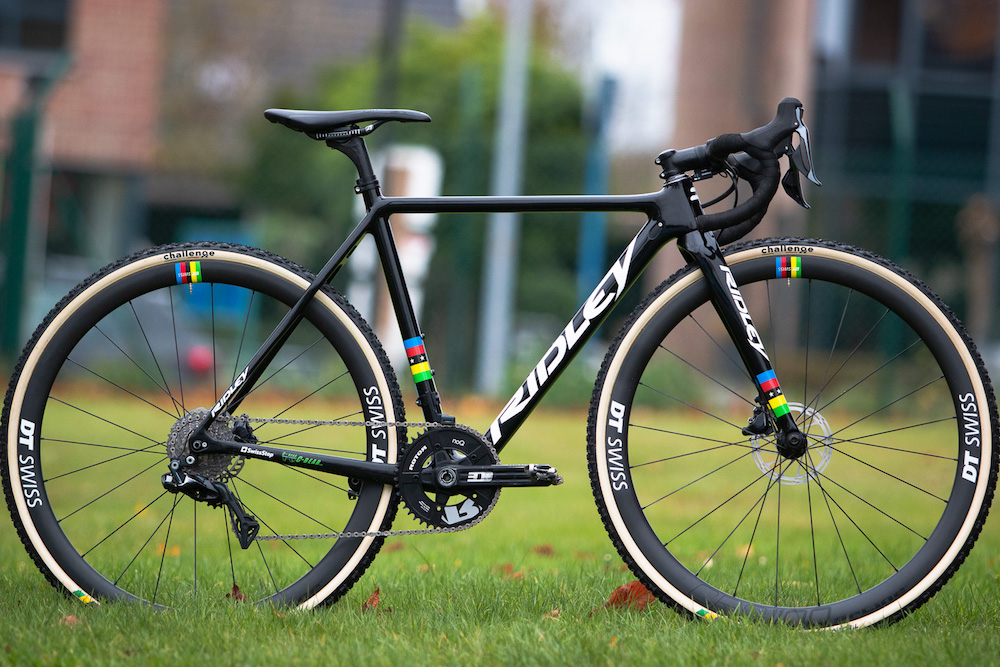 Pro bike: U23 cyclocross world champion Eli Iserbyt’s Ridley X-Night SL
Pro bike: U23 cyclocross world champion Eli Iserbyt’s Ridley X-Night SLGlossy black paintwork for the Marlux-Bingoal rider
By Paul Norman Published
-
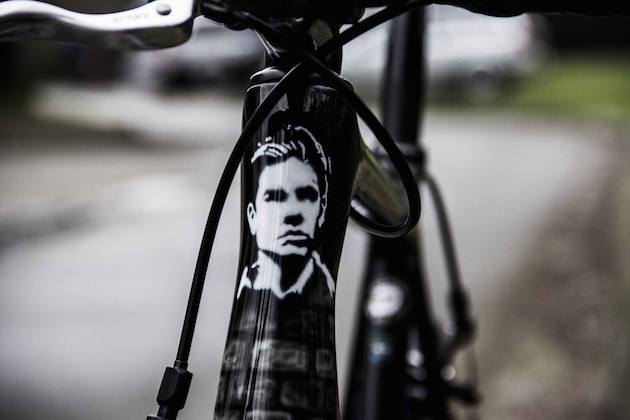 Wout van Aert will be riding a bike with his own face on at Paris-Roubaix
Wout van Aert will be riding a bike with his own face on at Paris-RoubaixEvery pro team has riders' names on their bikes, but Veranda's Willems-Crelan have taken things a step further with Wout van Aert's bike for Paris-Roubaix.
By Henry Robertshaw Published
-
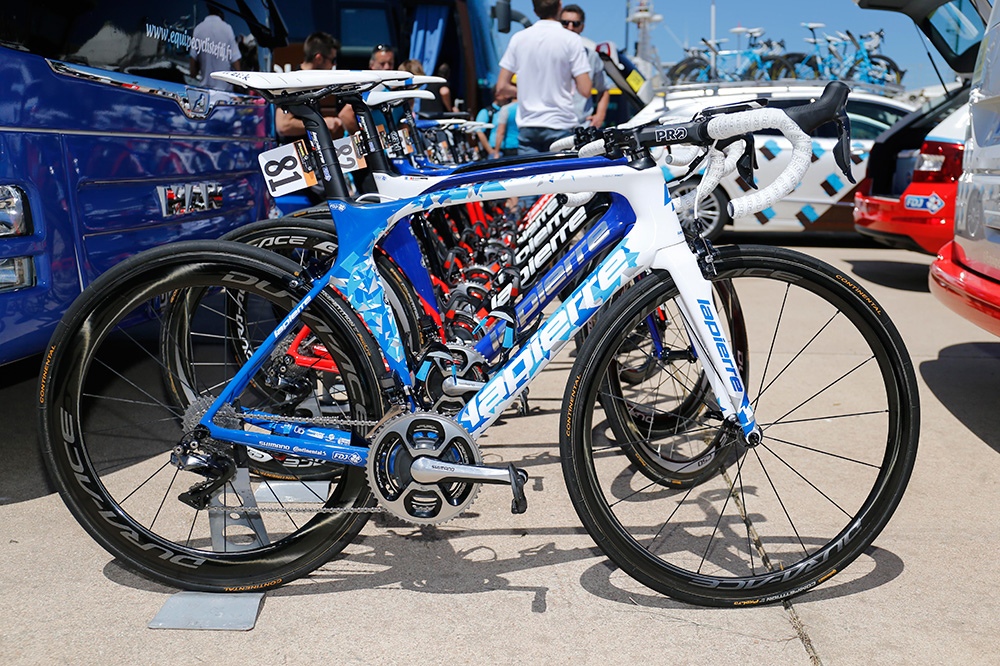 Thibaut Pinot spotted with a new unreleased Lapierre at the Giro d'Italia
Thibaut Pinot spotted with a new unreleased Lapierre at the Giro d'ItaliaFDJ team leader Thibaut Pinot appears to be riding what we suspect to be a new, custom painted Lapierre Aircode at the Giro d'Italia.
By Oliver Bridgewood Published